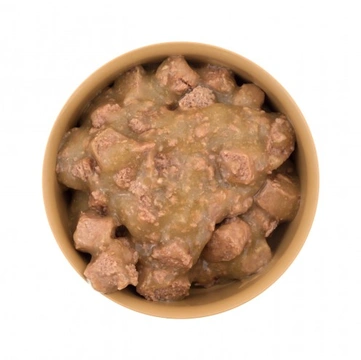
Do You Know What's in Your Dog Food?
You may be very surprised to find out just what meat goes into the pet food you feed to your dog. The label may say the source of protein is “meat”, but in actual fact where pet food is concerned, the definition of meat is not quite the same as it is for humans. The other thing is that a lot of cans of dog food do not contain the amount of meat you might first think when you read the label!
The Type of Meat That's in Pet Food
If you share your home with a canine friend and they are fussy eaters, the chances are you have tried just about every brand of dog food on the market to find out which one they really like. It can be very frustrating as well as wasteful if your dog turns their nose up at their food bowls every time you open a new can. However, if you knew just what goes into the food, you may understand why your canine companion is not that keen on eating its content!
Keeping Costs Low
The problem is that many pet food manufacturers have to keep their costs as low as possible to stay competitive. As such they will use scraps of meat in their recipes to make up its protein content rather than a good quality meat source and these can be anything of the following:
- Tongue
- Oesophagus
- Heart
- Nerves
- Blood vessels
- Other organ tissue
These are in fact, by-products of beef, lamb, pork and other animals that are unfit for human consumption, but which are okay to feed to our pets.
When it comes to pet food made out of poultry which includes chicken, turkey and duck, the meat used is as follows:
- Head
- Entrails
- Legs
- Organ tissues
The meat used is actually the left overs after the breast, legs and thighs have been removed and which is deemed unfit for human consumption, but okay to feed to pets.
What About Fish-based Pet Food?
Pet food that boasts a fish-based protein source is actually made up of the following:
- Fish heads
- Skin
- Scales
- Fins
- Skeleton
- Entrails
The one thing that all these animal body parts have in common is that they provide “connective protein” which is in fact, ligaments and tendons. In short, this is literally just gristle very much like the very chewy bits sometimes found on a steak. This gristle is a non-meat structural protein and it is far less digestible than any better quality meat proteins. It's estimated that a good percentage (around 15% to 20%) of the protein found in pet food is actually indigestible!
The Problem With Connective Protein
Because connective protein is far less digestible than a better quality meat protein source, it tends to stay in the colon before it gets pooped out. This is where the problem can become something a little more serious. Bacteria that lives in the colon thrives on the indigestible protein which it feeds off. This results in a massive increase in the bacterial population in the colon. This in turn can cause all sorts of health issues, including the following digestive disorders:
- Diarrhoea
- Bloat
- Intestinal gas
A Home-made Diet Could be the Solution
If your dog eats just about anything you put down for them, it is not so much of a problem, although it is worth bearing in mind that they are not getting as much out of their food as they should if you feed them poorer quality food and protein. Well known brands tend to use better sources of meat protein in their products, but this does not necessarily mean it is as good as you think it might be and that there could be quite a bit of gristle in it.
If on the other hand, your dog is a very fussy eater or they suffer from skin and other allergies, then feeding them canned dog food can be a real problem. One solution is to purchase specially formulated food for them and it might be worth preparing home-made food instead. However, you need to make sure it contains all the right vitamins, minerals and nutrients to keep them healthy.
Conclusion
Dogs are great companions and they give their owners so much pleasure in so many ways. Making sure dogs are fed a good nutritious well balanced diet can be a little challenging especially when you are not sure what proteins have been used in their pet food. One solution is to prepare your dog's food yourself, but this takes a bit of time and planning because you need to make sure it contains all the things dogs need to stay healthy. If you are at all concerned, you should discuss things with your vet which is especially true if they are very fussy eaters or if they suffer from any sort of allergy.



